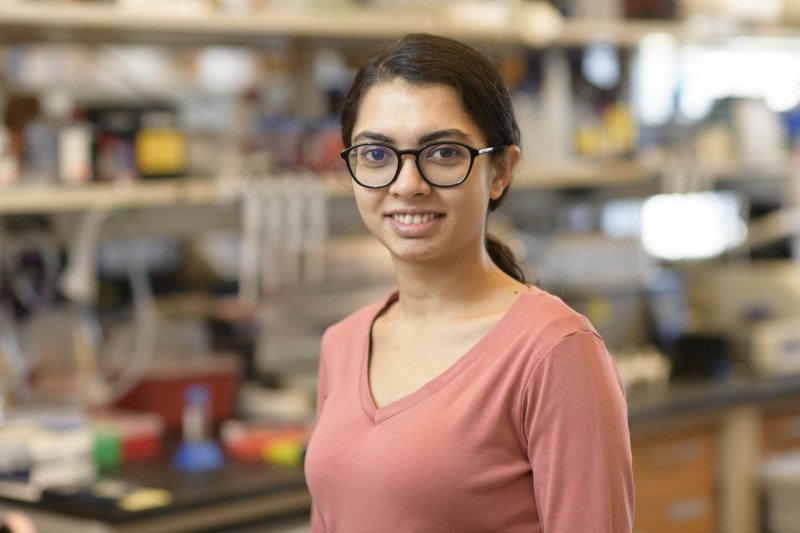
Sahaha Rao
When did you know you wanted to be a scientist?
When I was in high school back in India, I had a wonderful chemistry and biology teacher, Mrs. Padma. She encouraged us to always read more than what was prescribed and to reach out to scientists. Having a teacher who propped up her female students and recognized their talents was crucial in me wanting to be a scientist. I decided when I was in high school that I wanted to be a scientist and never changed my mind after that.
Did you have a scientific role model growing up?
Mrs. Padma was one, but it’s never just one person. You need mentors every step of the way. I had a nascent interest in structural biology and the Nobel Prize for solving the structure of the ribosome had just been awarded in 2009. I had a chance meeting with a structural biologist from the Indian Institute of Science, Professor MRN Murthy, who I later worked with. I also did my undergrad at Indian Institute of Science, all because of him. He really fostered my interest in science, structural and chemical biology in particular, which ultimately brought me to the Tri-I Chemical Biology Program.
Why did you choose the Bachovchin lab for your graduate work?
I come from a chemical biology background and I saw that Dan Bachovchin was starting to do some new and exciting work in immunology using chemical biology. So, I thought this was a perfect match for my skills and interests. That was number one. Number two was that Dan is such an enthusiastic guy and a mentor. His infectious energy and motivation for science is something I try to emulate every day, and hopefully for the rest of my career.
What is your current project?
My work focuses on the NLRP1 inflammasome. Our bodies are constantly under attack by pathogens — something that is being widely discussed right now. But our immune system has mechanisms to fight them. One such mechanism is inflammasomes. These inflammasomes detect a pathogen or danger signal and kill the cell by causing it to lyse, or break apart. This inflammatory cell death activates other immune cells to mount a larger immune response.
There are many different families of inflammasomes. The one that I study is called NLRP1 and it was the first NLR inflammasome discovered. My research so far has focused on how NLRP1 is activated, and I’m now trying to understand what specific danger signals trigger it.
What is it like being a woman in science at MSK?
There is a lot of support for women at all training levels at MSK. We have many female scientist role models to look up to. I think it’s important to recognize that women want to be evaluated for their science and not for being women. But it is important to recognize their work and their resilience because it does take a certain amount of resilience to be a minority of any kind in STEM. Women need a platform; they need recognition. It’s wonderful that the Kravis WiSE initiative is doing exactly that, and here at MSK! And of course, I’m grateful to all of my mentors — Dan, Craig Thompson, our graduate program directors and my thesis committee — for their continued support.
When you’re not in the lab, what do you like to do?
Science is my number one priority, but a close second is Bharatanatyam, an Indian classical dance form. Like most students of the art form, I started young and have trained for 15 years. Dancing has been a great creative outlet and helps keep my mind and body agile.

